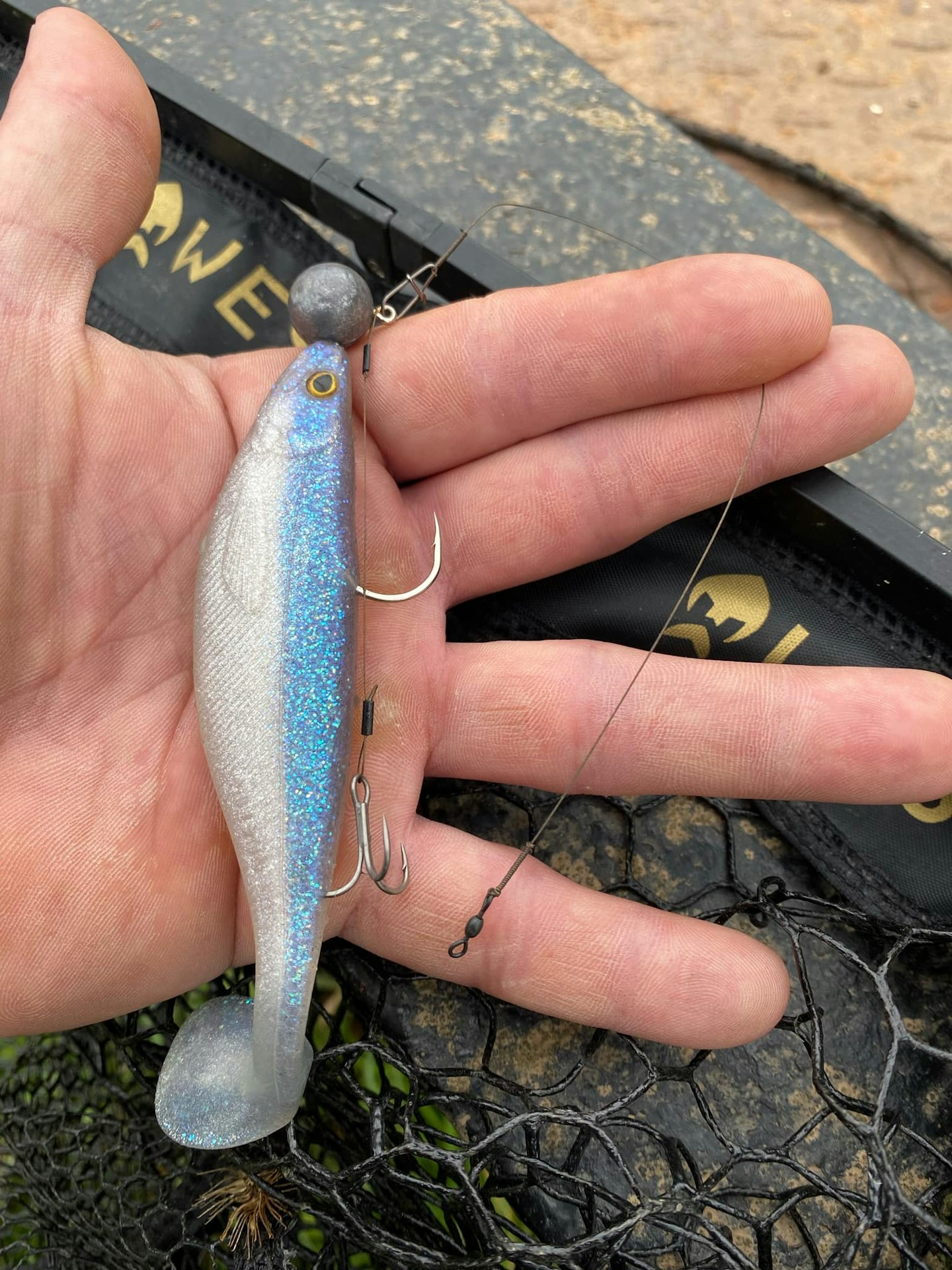Zander are becoming an increasingly popular predatory fish to catch in the UK, yet surprisingly few anglers have managed to land one. If you visit a venue with a strong zander population, lure fishing can be an excellent and exciting way to target these fish and with the right tactics, you can land some exceptional fish throughout the year.
2023 National Angling Awards Lure Angler, Luke Jordan shares his tips on how to maximise your lure fishing success and catch more zander this season!
Location
I spend a lot of time fishing on the Gloucester Canal during predator season. The rivers can be very difficult for lure fishing at this time of year, as they are often in flood, so I prefer to focus on just one venue, which is the canal.
I believe that concentrating on a specific location helps you learn a lot about it, allowing you to get the most out of your experience. When approaching the canal, I always try to locate the baitfish along with the shoals of bream.
When the water is clear, I find the feeding window can be very short. The zander tend to feed briefly around first light and then again as it gets dark. However, when the water is coloured, I can expect bites at any time during the day.
USING ONE OF THE BEST LURE FISHING RODS WILL HELP IMPROVE YOUR ACCURACY AND BITE DETECTION.

Lure choice
I tend to stick with a Westin Shadteez between 12 and 16 cm, as these baits usually attract the bigger fish. If visibility is less than four inches, I’ll use either a very bright or very dark Shad. However, if there’s four inches or more, I stick to natural-coloured baits. Choosing the lure colour is the easy part; the real challenge is often selecting the right weight for the jighead.
For a reaction strike setup, I use a 12 cm Westin Shadteez with a 17-gram jighead, a 9 cm stinger, and a wire trace.
HELP REDUCE THE LOAD SO YOU CAN STAY MOBILE BY CHOOSING THE BEST LURE FISHING LUGGAGE.

Technique
I see many anglers begin fishing by checking the depth and wind strength, then decide a 10-gram jighead should work for the day. However, sometimes fish will only hit the lure if it’s moving at a specific speed, so adjusting the jighead weight is essential.
Some days, I catch fish on a 7-gram jighead, while on other days, I might use a 17-gram jighead. When the water is clear and it's the middle of the day, a time when zander are not usually feeding, I often start fishing for a reaction strike. For this, I use a heavy jighead with either a 12 or 16 cm bait, rigged with a stinger hook and a wire trace.
NEW TO LURE FISHING? OUR EXPERT GUIDE HAS ALL THE TIPS AND TACKLE YOU NEED TO START.

Tackle
Lure fishing for zander is typically done with fluorocarbon, as a wire trace can often spook the fish. However, when fishing for a reaction strike with a stinger and trace, the lure moves so quickly that the fish has no time to hesitate. The lure falls through the water at speed, prompting the zander to snap at it impulsively, so a wire trace can be used.
For canal zander fishing, my setup includes a Westin W6 T&C 7'1", rated 7-21g. I’ve tried several rods for zander, but this one stands out as the best. It’s paired with a Shimano Vanford 2000, spooled with Westin W6 16 lb braid, and at least 3 feet of 13 lb fluorocarbon leader. The clearer the water, the longer the leader should be.
COUPLE YOUR LURE ROD WITH ONE OF THE BEST SPINNING REELS TO HELP RETRIEVE YOUR LURE MORE SMOOTHLY.

Top tips
Choosing a fishing spot isn’t usually difficult, as you can often get information from a bailiff or match anglers to find out where baitfish and bream are being caught. Once I know this, I can stay in the same area all day, knowing zander will be nearby. The challenge is finding the right lure and presentation to attract them.
The best times to fish for zander are in low-light conditions, especially when the water is clear. A gray, cloudy day is ideal, as zander dislike bright sunlight. Additionally, if there is mist on the water, bites can be very hard to come by until the mist lifts.
Use a stinger hook for reaction strikes because the lure is moving quickly, and the fish may not hit the bait precisely. The stinger often helps secure more fish on the bank.
IF LURE FISHING ISN'T WORKING, TRY THIS RIG OUT TO CATCH A ZANDER ON A DEADBAIT INSTEAD.

